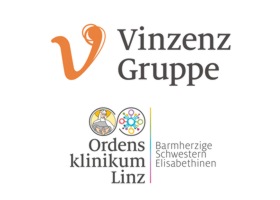Positioning irrigation of contrast cystography for diagnosis of occult vesicoureteric reflux: association with technetium-99m dimercaptosuccinic acid scansTools Berger, Christoph und Becker, Tanja und Koen, Mark und Zeino, Mazen und Fitz, Friedrich und Beheshti, Mohsen und Wolf-Kohlmeier, Iris und Haim, Silke und Riccabona, Marcus (2013) Positioning irrigation of contrast cystography for diagnosis of occult vesicoureteric reflux: association with technetium-99m dimercaptosuccinic acid scans. Journal of pediatric urology, 9 (6 Pt A). pp. 846-850. ISSN 1873-4898 4 - 2012 JPUROL Berger.pdf ['document_security_info' not defined] Nur registrierte Benutzer ['summary_page:download' not defined] (473kB) KurzfassungOBJECTIVE
Positioning irrigation of contrast (PIC) cystography identifies occult or PIC vesicoureteral reflux (PIC-VUR) in children with recurrent febrile urinary tract infections (UTI) but no vesicoureteric reflux (VUR) on standard voiding cystourethrogram (VCUG). We sought to identify the relationship between PIC-VUR and renal scarring in technetium-99m dimercaptosuccinic acid (DMSA) scans.
PATIENTS AND METHODS
We retrospectively analysed PIC cystograms and DMSA scans for 154 kidneys in 81 children (65 girls; 16 boys; median age, 4.7 years; range, 0.9-15.2). Renal scarring was graded on a scale of 0-3. DMSA scans were pathologic in 66 patients (81%). Children had experienced mean 3.8 febrile UTI (range 1-25). Forty-seven (58%) children had a history of reflux, including 15 (19%) with previous anti-reflux operations. Indications for PIC cystography were recurrence of febrile UTI after either bilateral negative VCUG (66 children) or unilateral VUR (15 children) with contralateral/bilateral scarring or reflux that had changed sides in subsequent VCUGs.
RESULTS
PIC-VUR was bilateral in 63, unilateral in 12, and absent in 6 children. Statistically significant associations between PIC-VUR grade and severity of renal scarring were identified in inter-individual (n = 77, p = 0.017) and intra-individual (refluxing vs. nonrefluxing kidney; n = 12, p = 0.008) analyses. After excluding patients with history of VUR, statistical significance was maintained in inter-individual analysis (n = 49; p = 0.018).
CONCLUSION
The data suggest an association between PIC-VUR and severity of renal scarring, and legitimise the use of PIC cystography in children with renal scarring due to recurrent febrile UTI but negative findings on VCUG.
|
||||||||||||||
|
|
|
|


 Tools
Tools Tools
Tools